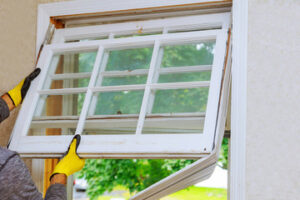Search engine optimization is one of the most cost-effective and long-term digital marketing strategies. It also provides a strong return on investment (ROI) and helps increase website visibility, traffic, and leads.
With 3.5 billion Google searches each day, SEO is the most important way to get your business in front of people who are looking for what you offer. Click https://www.rankboss.com/ to learn more.

Keywords are the building blocks of SEO and digital marketing. They identify the themes and topics of your content and how search engines understand what that content is about. Choosing the right keywords ensures that your content is relevant to user intent and optimizes visibility for search engine results and online advertising. Keywords can be used to optimize your site’s structure, meta information, and links, and are a key component of successful SEO strategies.
Keywords help search engines uncover pertinent information, with short keywords consisting of 1 or 2 words and long tail keywords containing a phrase with 3 or more words. The importance of keywords cannot be overstated, and they are a cornerstone of modern SEO strategies. The correct keywords can improve your website’s visibility, drive targeted traffic, and result in increased sales and conversions. However, it is important to remember that keyword density is less important than relevance. Adding too many keywords can actually hurt your rankings, and it is important to use them naturally in your content.
The first step in identifying the right keywords is to determine what your target audience is searching for. This can be done by analyzing your competitors’ websites or by using tools such as BuzzSumo. Once you have a list of keywords, you can prioritize them by evaluating the competition, assessing their relevance, and determining if they are consistent with your brand voice and tone.
A good keyword strategy includes both short and long-tail keywords, as well as head and niche keywords. Singular keywords tend to have higher volume, but also come with a lot of competition. For example, if you want to rank for “clothes,” you will face stiff competition from major clothing retailers like Amazon and Nordstrom. Long-tail keywords, on the other hand, have lower volume but are highly relevant and easier to rank for.
Once you’ve selected your keywords, it’s time to create high-quality content that is relevant to those terms. Aim to include your keywords in the title, headings, and body text of your content. However, be sure to avoid keyword stuffing, which is the practice of inserting keywords into your content too frequently. Search engines penalize sites that engage in this practice, and it will hurt your rankings in the long run.
Content
Content is a crucial part of SEO that improves the visibility of a website in search engines. In addition, it helps with brand awareness, engagement, and organic lead generation. It also allows marketers to connect with prospects in a way that is relevant and meaningful to them, and establishes trust in the brand. The best SEO campaigns are based on well-crafted, compelling, and insightful content that is both engaging and relevant to the audience.
While it might be tempting to dismiss the importance of SEO content, you should think twice before doing so. Without quality content, your website will rank very low on the SERPs. This will not only damage your search engine optimization efforts, but it will also hurt your conversion rates.
The best content for your site is highly relevant to the searchers’ interests, pain points, and mindset. It also reflects your expertise in the subject matter and is useful to readers. It should also be properly structured to ensure that it can be easily scanned and read by searchers. In addition, you should keep your content updated on a regular basis.
In addition to the structure of your content, you should also pay attention to how it is presented. This means ensuring that your web pages have descriptive meta tags and that your keyword phrases are scattered throughout the body of your content. The content should also be concise and focused, and it should be written in the language of your target market.
Finally, you should optimize your content by using internal links and social media links. This will help you get the most out of your content and increase your chances of ranking higher on the search results page. It is important to have a consistent content strategy, and it should be integrated into your entire online marketing plan.
If you are not sure how to create the best SEO content, consider hiring a professional. Trone has a team of experts who can provide you with the right advice and guidance to make your business more visible online. Contact us today to learn more about our services!
Link building
Link building is one of the most important factors in seo. It’s a way to get other websites to link back to your site, and it can be done in a number of ways. Some methods are more effective than others, but they all depend on creating content that is valuable to your audience and attracting other website owners to link to it.
Ultimately, the goal of link building is to increase the number of quality inbound links to your site, which will increase your search engine rankings. However, you have to remember that not all inbound links are created equal. In fact, some links may even harm your ranking if they are from low-quality websites. Therefore, it’s important to use only white-hat link building techniques that comply with Google’s guidelines.
Before you begin your link-building campaign, it’s essential to understand what search engines look for in a link. In general, search engines look for keywords in the anchor text (the visible part of a link). Ideally, your anchor texts should include the keyword you’re targeting. This will help the search engine understand that the page you’re linking to is relevant to that keyword. However, don’t overdo it – too many keyword-rich anchors can signal that you’re trying to manipulate the system and may be penalized by Google.
Another important factor in link building is the linking domain’s authority. For example, a link from the New York Times will pass more value than a link from a personal blog. The reason is that the New York Times has a high domain authority, which means it’s an established website that people trust. If you want to improve your search engine rankings, then it’s essential to build links from reputable sites.
Getting other sites to link to yours can be a difficult task, especially if you’re new to SEO. There are a few key strategies that can help you succeed in link building. These strategies include guest posting, social media promotion, and resource page linking. To make these strategies more effective, it’s a good idea to target blogs and sites that are in your niche. This will reduce the number of people you need to contact and make it easier to get them to link to your site.
Analytics
SEO analytics is the process of evaluating and analyzing website data to gain insights into search engine optimization performance. It helps you make informed decisions to improve your site’s visibility and ranking in organic search results. It also helps you identify the keywords and content that are performing well, allowing you to optimize your website for better performance.
Effective SEO analysis requires a clear understanding of what your goals are. Whether you want to increase the number of organic search visitors or boost conversion rates, it is important to set measurable objectives and measure your progress over time. The best way to do this is by using a search engine optimization tool like Google Analytics, which can provide you with valuable information about your website’s performance.
Another important metric is dwell time, which is how long users spend on your website’s pages. This metric showcases how engaging your content is and how well it aligns with user intent. It is important to note that this metric does not necessarily reflect the average time on page for all users. For example, if someone visits your page and stays for three minutes but then reads another article on the same topic, Google will count this as two times on page.
Aside from metrics, SEO analytics can also help you improve your content by identifying what works and what doesn’t. For example, if you have a high bounce rate or low session durations, it might be time to rethink your content strategy. SEO analysis can also help you understand how your audience interacts with your website, including the type of content they enjoy and which pages are most effective for driving organic traffic.
SEO tools such as Ahrefs and SEMrush can help you uncover keyword rankings, analyze competitor backlinks, and evaluate your website’s overall health. They can also help you spot and disavow spam links that are lowering your website’s rank in search engines. These tools are a must-have for any SEO professional. In addition, they can help you create a link building strategy that is based on a solid foundation of research and data.








